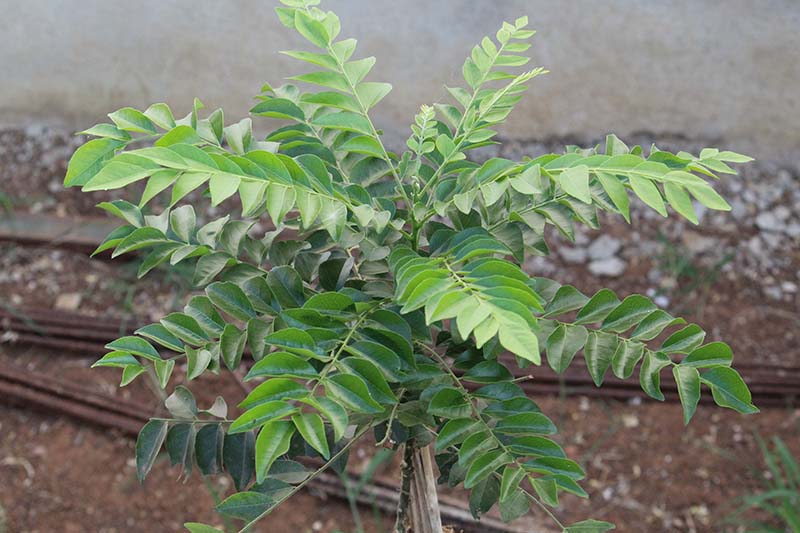Curry leaves (Murraya koenigii) are a staple herb in Indian and Sri Lankan cuisine, where they are used to add flavor to various dishes. The leaves come from a small tree or shrub that is native to India, and they have a distinctive aroma that is often described as a combination of citrus and spice.
Curry leaves are often used fresh, although they can also be dried and stored for later use. They are commonly added to curries, soups, stews, and rice dishes, and are also used as a seasoning for fried or roasted snacks.
Aside from their culinary uses, curry leaves are also believed to have several health benefits. They are rich in antioxidants, and some studies suggest that they may help to lower cholesterol levels and improve digestion.
Curry leaves are relatively easy to grow, and can be grown as a small tree or shrub in a sunny, well-drained location. They prefer warm, humid conditions, and should be watered regularly to keep the soil moist. Curry leaf plants can also be grown in containers and kept indoors in colder climates.

Curry leafs are easy to grow and maintain, and you can grow them in a pot or directly in the ground. Here are the steps to grow curry leaf:
- Purchase curry leaf seeds or a curry leaf plant from a local nursery or online store.
- Select a pot or a location with well-drained soil and good sunlight. Curry leaf plants need at least 6 hours of direct sunlight daily.
- If you are growing curry leaf in a pot, fill it with well-drained soil. If you are planting directly in the ground, loosen the soil and add compost to it.
- If you are planting seeds, sow them in the soil about 1/4 inch deep and 1 inch apart. Water the soil thoroughly.
- If you are planting a curry leaf plant, dig a hole slightly larger than the root ball and place the plant in it. Fill the hole with soil and gently tamp it down. Water the plant thoroughly.
- Water the curry leaf plant regularly, but be careful not to overwater it. The soil should be moist, but not waterlogged.
- Fertilize the plant with a balanced fertilizer every month during the growing season.
- Prune the curry leaf plant regularly to promote bushier growth and remove any dead or yellowing leaves.
- Curry leaf plants can be propagated by stem cuttings. Take a stem cutting about 4-6 inches long with a few leaves and plant it in well-draining soil. Keep the soil moist and wait for the cutting to take root.
With these steps, you can easily grow curry leaf plants in your home garden or patio.
Health Benefit of Curry Leaf
Curry leaves are a popular herb used in Indian cuisine that are also known for their medicinal properties. Here are some of the health benefits of curry leaves:
- Promotes digestion: Curry leaves are rich in fiber, which can help regulate digestion and prevent constipation.
- Lowers cholesterol levels: Curry leaves contain antioxidants that can help lower cholesterol levels and prevent the buildup of plaque in the arteries.
- Helps control diabetes: Curry leaves have been shown to help regulate blood sugar levels and improve insulin sensitivity, making them beneficial for people with diabetes.
- Boosts immune system: Curry leaves are rich in vitamins and minerals that can help boost the immune system and protect against infections.
- Anti-inflammatory properties: Curry leaves contain anti-inflammatory compounds that can help reduce inflammation in the body and alleviate symptoms of inflammatory conditions such as arthritis.
- Promotes hair health: Curry leaves are known for their benefits for hair health. They can help reduce hair loss, improve hair growth, and prevent premature graying of hair.
- May have anti-cancer properties: Some studies have suggested that curry leaves may have anti-cancer properties due to their high antioxidant content.
Overall, adding curry leaves to your diet can be a flavorful way to boost your health and well-being.

